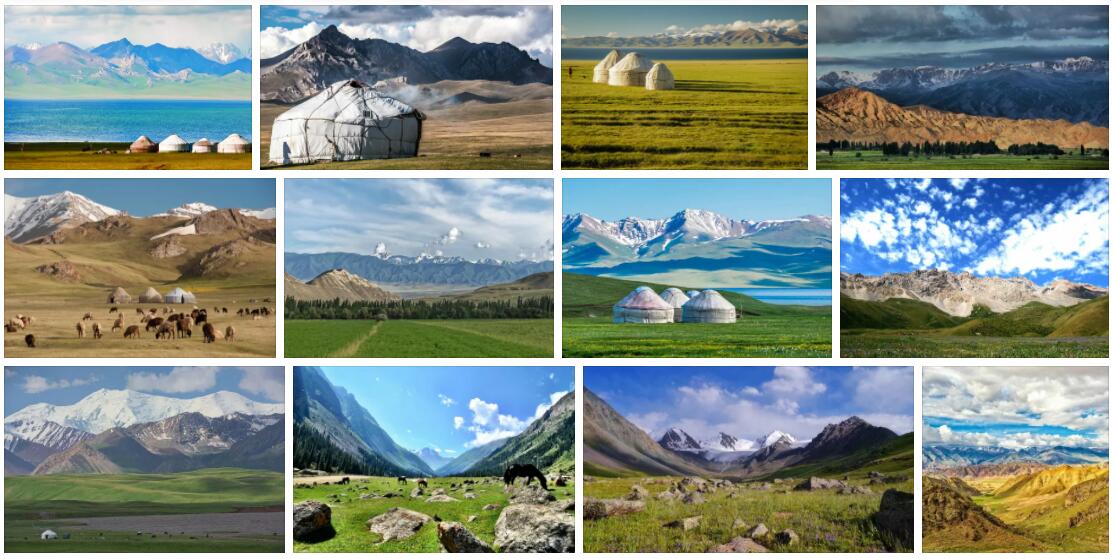Overview of Kyrgyzstan
Kyrgyzstan is a landlocked country located in Central Asia, bordered by Kazakhstan to the north, China to the east, Tajikistan to the south, and Uzbekistan to the west.
Here is an overview of Kyrgyzstan:
- History: Kyrgyzstan has a rich and ancient history that dates back thousands of years. It was once part of the Silk Road, a major trading route connecting Europe and Asia. The region saw the rise and fall of various empires and civilizations, including the Mongols, the Timurids, and the Soviet Union. Kyrgyzstan gained independence from the Soviet Union in 1991.
- Capital and Major Cities: The capital city of Kyrgyzstan is Bishkek, a bustling metropolis with a mix of Soviet-era architecture and modern developments. Other major cities include Osh, Jalal-Abad, and Karakol. Each city offers its own unique charm, historical sites, and cultural experiences.
- Geography: Kyrgyzstan is known for its stunning natural landscapes. It is dominated by mountainous terrain, with the Tien Shan mountain range covering a significant portion of the country. Kyrgyzstan is also home to beautiful lakes, including Issyk-Kul, the world’s second-largest alpine lake. The country is a paradise for outdoor enthusiasts, offering opportunities for hiking, trekking, mountaineering, skiing, and more.
- Population and Language: Kyrgyzstan has a population of around 6.5 million people. The majority of the population is ethnically Kyrgyz, with significant Uzbek and Russian minority groups. The official language is Kyrgyz, while Russian is widely spoken and serves as an interethnic language.
- Culture and Religion: Kyrgyz culture is deeply influenced by nomadic traditions and the country’s Central Asian heritage. The Kyrgyz people have a rich oral tradition, with epic poems and songs that reflect their history and way of life. Islam is the predominant religion, with the majority of the population following Sunni Islam. Traditional practices and customs, such as hospitality, respect for elders, and a strong sense of community, are still cherished in Kyrgyz society.
- Economy: Kyrgyzstan’s economy is primarily based on agriculture, mining, and services. The country is known for its natural resources, including gold, coal, and various minerals. Agriculture plays a significant role, with livestock farming, wheat production, and dairy products being important sectors. Kyrgyzstan is also developing its tourism industry, attracting visitors with its natural beauty and cultural heritage.
- Tourism: Kyrgyzstan’s tourism industry has been growing in recent years. The country’s natural landscapes, including its mountains, lakes, and national parks, draw outdoor enthusiasts and adventure seekers. Travelers can explore picturesque trekking routes, visit traditional yurt camps, experience nomadic hospitality, and discover historical sites such as ancient Silk Road cities and petroglyphs.
- Infrastructure: Kyrgyzstan has a developing infrastructure, particularly in urban areas. Bishkek and other major cities offer modern amenities, including hotels, restaurants, and transportation facilities. However, in rural and remote areas, infrastructure may be more basic, with limited services and facilities.
It’s important to note that Kyrgyzstan is a democratic republic, and travelers are advised to respect local customs and laws. The country offers a unique blend of natural beauty, cultural heritage, and warm hospitality, making it an intriguing destination for those seeking adventure and exploration in Central Asia.

Comment (0)